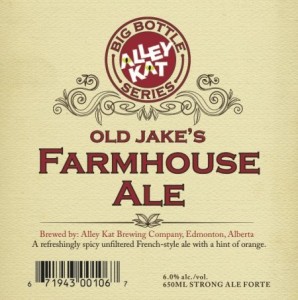 Regular readers of onbeer.org will know that I have over the years been exploring the taste differences between keg and bottle (and can). It has been an interesting journey without any firm or solid conclusions so far. You can read previous experiments and side-by-side tastings here, here and here. There is a broad consensus in the beer world that beer on tap and in the bottle display subtle differences. Whether that is actually the case, we don’t really know. Hence my intermittent experimenting. It has been a while since I have made an intentional side-by-side, but the topic still intrigues me.
Regular readers of onbeer.org will know that I have over the years been exploring the taste differences between keg and bottle (and can). It has been an interesting journey without any firm or solid conclusions so far. You can read previous experiments and side-by-side tastings here, here and here. There is a broad consensus in the beer world that beer on tap and in the bottle display subtle differences. Whether that is actually the case, we don’t really know. Hence my intermittent experimenting. It has been a while since I have made an intentional side-by-side, but the topic still intrigues me.
An opportunity presented itself recently, so I thought I would blow the dust off my lab coat and take another stab at seeing if I could detect any difference. Usual caveats apply – not blind, no control over handling, etc., although I did take the usual precautions – same temperature, same shape of glass and so forth.
The beer in question is Alley Kat’s latest Big Bottle, Old Jake’s Farmhouse Ale. I reviewed it a week or so ago (read it here). I was in Sherbrooke a few days ago and they happened to have Old Jake’s on their growler system. As I happened to have a one-litre howler on me (lucky coincidence!), I decided to get a fill of it. On a lark I decided to also buy another bottle of Old Jake’s.
So far I have tried fairly straightforward beer for my tests, mostly malt accented. I thought testing out a saison, with its pronounced yeast characteristics might prove interesting. I pulled a glass of each and sat down to see what differences I perceived. We know the beer is from the same batch, and while we can’t guarantee they were treated the same during shipping and storage, we can be highly confident they were given similar treatment – Alley Kat tends to self-distribute in the Edmonton area and Sherbrooke has a sizable beer cooler.
Of course the initial appearance of the beer were identical, a slightly hazy medium gold. Although I did think the head was both fuller and left more lacing in the bottled version. In the aroma, I thought I detected a bit more fruitiness in the kegged version, with the bottle being more sharp. In the taste, the bottled version seemed drier, spicier and more prickly. I might have also detected a bit more hop note as well, but can’t quite trust myself on that one.
The carbonation seemed higher and more acidic in the bottled version. This effect might be due to the slight carbonation loss in the growler filling. However Sherbrooke’s system is fairly high tech, so I can’t really imagine it was that significant to the overall effect of the beer (and for the record I conducted the experiment a few hours after the purchase, so that is not an issue). I am left wondering if the kegged version presents with a softer carbonation – a trait I have often found in kegged vs. bottled beer, even with my homebrew.
I don’t want to exaggerate the difference. They are clearly the same beer. I just think the kegged version presented softer and more rounded. It seemed to accent the earthy notes more than the spicy notes. It also felt fuller in the body.
My experience with the blind test of Yukon Red (that would be this post) makes me more cautious around making definitive statements, but I would swear on a copy of The New Complete Joy of Homebrewing that I detected noticeable differences between the two versions of the beer.
Just another data point on the grand science experiment that is drinking beer.

Leave a Reply